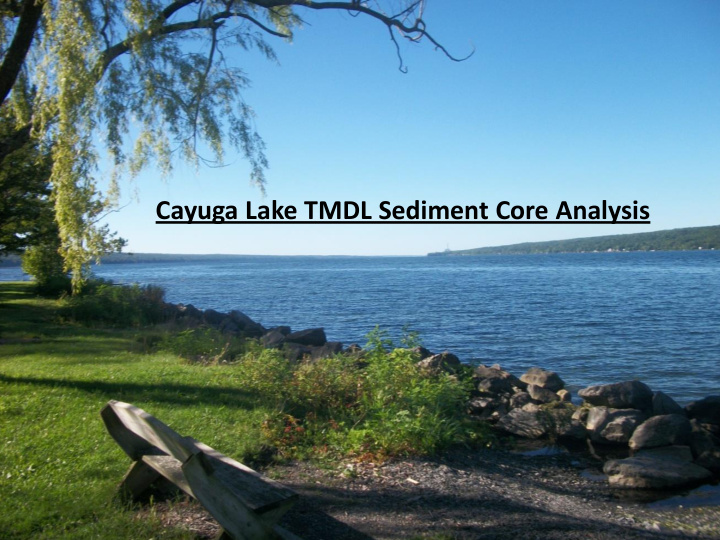



Cayuga Lake TMDL Sediment Core Analysis
Goals: • to document the history of TP levels in Cayuga Lake, as background to TMDL assessment of TP on the southern shelf • To independently corroborate modeling results, based on comparison between mechanistic hindcast and paleolimnologic inference TP modeling
Project Participants • USEPA • Abt Associates • Anchor QEA • St. Croix Watershed Research Station (MN) • Hutchinson Environmental Sciences • Washington University of Saint Louis • Life Science Labs • NYSDEC • Rensselaer Polytechnic Institute • Hobart and William Smith Colleges
Project Tasks 1) Sediment Coring – completed 5/13/2014 2) Core sample analyses – complete, Abt report complete 3) Diatom TP inference modeling – complete 4) Data correlation – in progress 5) Historical water quality interpretation – part of final report 6) Final paleolimnology Report – spring 2016
core Milliken Point
Cayuga Lake Sediment Core base top black layer 1990-2000
Mullins, H. T. 1998, Environmental change controls of lacustrine carbonate, Cayuga Lake, New York. Geology26;443-446. c. 1820 DRAFT
DRAFT
DRAFT
Preliminary Conclusions - Adequate core recovery and age control to carry out project objectives - Oligotrophic lake until 1840s, mesotrophic into 1950s, borderline eutrophic from late 1950s into late 1980s, mesotrophic to recent - Inferred TP comparison to measured TP data and model hindcast pending……. - Some carbonate deposition associated with increased lake productivity - Terrigenous material and volatile solids rise until 1960s, then continue with episodic variability - Carbonate decline starts and the most recent rise in terrigenous material occurs in late 1990s
Recommend
More recommend